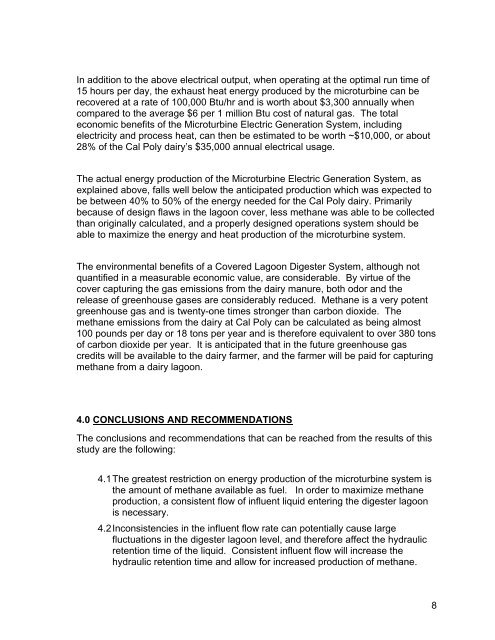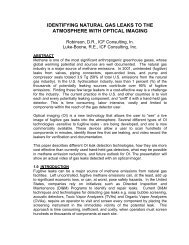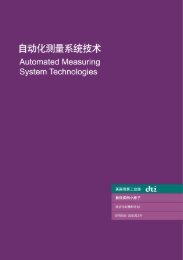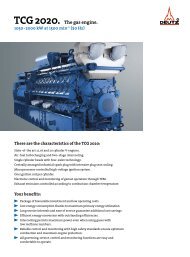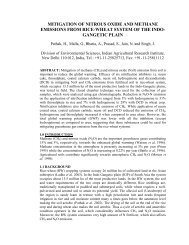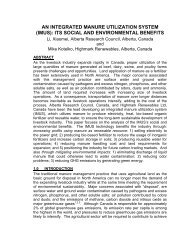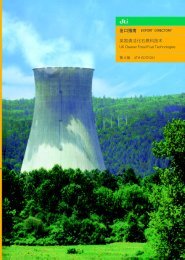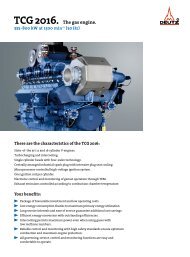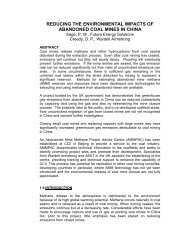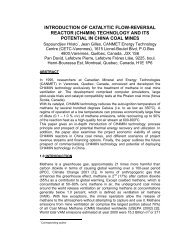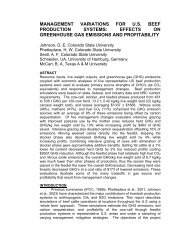Biogas Production From A Covered Lagoon Digester And Utilization ...
Biogas Production From A Covered Lagoon Digester And Utilization ...
Biogas Production From A Covered Lagoon Digester And Utilization ...
You also want an ePaper? Increase the reach of your titles
YUMPU automatically turns print PDFs into web optimized ePapers that Google loves.
In addition to the above electrical output, when operating at the optimal run time of<br />
15 hours per day, the exhaust heat energy produced by the microturbine can be<br />
recovered at a rate of 100,000 Btu/hr and is worth about $3,300 annually when<br />
compared to the average $6 per 1 million Btu cost of natural gas. The total<br />
economic benefits of the Microturbine Electric Generation System, including<br />
electricity and process heat, can then be estimated to be worth ~$10,000, or about<br />
28% of the Cal Poly dairy’s $35,000 annual electrical usage.<br />
The actual energy production of the Microturbine Electric Generation System, as<br />
explained above, falls well below the anticipated production which was expected to<br />
be between 40% to 50% of the energy needed for the Cal Poly dairy. Primarily<br />
because of design flaws in the lagoon cover, less methane was able to be collected<br />
than originally calculated, and a properly designed operations system should be<br />
able to maximize the energy and heat production of the microturbine system.<br />
The environmental benefits of a <strong>Covered</strong> <strong>Lagoon</strong> <strong>Digester</strong> System, although not<br />
quantified in a measurable economic value, are considerable. By virtue of the<br />
cover capturing the gas emissions from the dairy manure, both odor and the<br />
release of greenhouse gases are considerably reduced. Methane is a very potent<br />
greenhouse gas and is twenty-one times stronger than carbon dioxide. The<br />
methane emissions from the dairy at Cal Poly can be calculated as being almost<br />
100 pounds per day or 18 tons per year and is therefore equivalent to over 380 tons<br />
of carbon dioxide per year. It is anticipated that in the future greenhouse gas<br />
credits will be available to the dairy farmer, and the farmer will be paid for capturing<br />
methane from a dairy lagoon.<br />
4.0 CONCLUSIONS AND RECOMMENDATIONS<br />
The conclusions and recommendations that can be reached from the results of this<br />
study are the following:<br />
4.1 The greatest restriction on energy production of the microturbine system is<br />
the amount of methane available as fuel. In order to maximize methane<br />
production, a consistent flow of influent liquid entering the digester lagoon<br />
is necessary.<br />
4.2 Inconsistencies in the influent flow rate can potentially cause large<br />
fluctuations in the digester lagoon level, and therefore affect the hydraulic<br />
retention time of the liquid. Consistent influent flow will increase the<br />
hydraulic retention time and allow for increased production of methane.<br />
8


